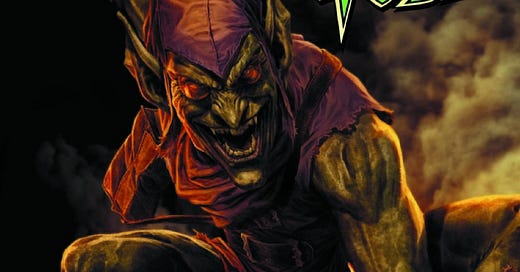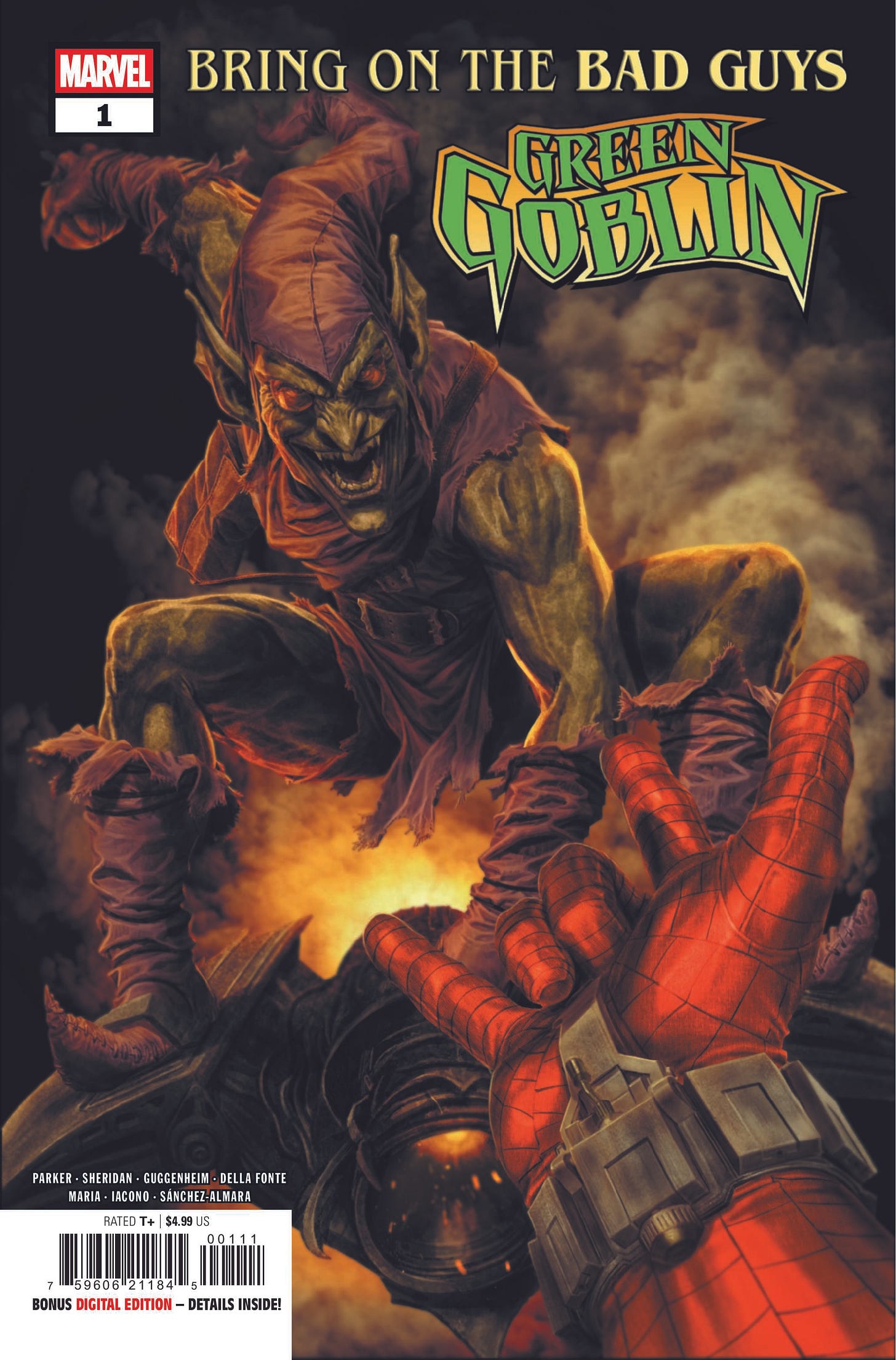“Neither Body Nor Mind”
Writer: Ethan S. Parker & Griffin Sheridan; Marc Guggenheim
Art: Matteo Della Fonte; Michael Sta. Maria
Colors: Mattia Iacono; Dono Sanchez-Almara
Letters: VC’s Travis Lanham
Cover: Lee Bermejo
Variant Covers: Derrick Chew; Miguel Mercado; Aaron Kuder & Marte Gracia; Greg Land & Rachelle Rosenberg; Todd Nauck & Rachelle Rosenberg
Publisher: Marvel Comics
Price: 4.99
Release Date: July 2, 2025
An ALL-NEW piece of Norman Osborn's villainous history... REVEALED! THE GREEN GOBLIN is one of the most terrifying villains in the Marvel universe — thanks to a deal with Mephisto. But what does the SOUL FORGE have to do with it?
Part TWO of SEVEN Villainous One-Shots!
SUBSTACK EXCLUSIVE
Good Writing, Wasted
It is hard to write a story about Norman Osborn that makes him worse than he already is. Norman already used Harry as collateral in a deal with the devil, and regardless of one’s opinion of that story, it’s hard for the character to get much worse. But, as Bring on the Bad Guys: Green Goblin #1 reveals, that was only half of the bargain.
Readers hoping to learn something substantially new about Norman in this issue will be disappointed. Parker and Sheridan do their best. But there is very little left to mine about the character. Bring on the Bad Guys: Green Goblin #1 is focused on the first time Norman murders someone. Parker and Sheridan stretch the “Will he? Won’t he? Oh boy will he!” sequence over nine pages. They begin it with several panels of Norman betraying uncertainty over whether he is willing to inflict collateral damage in the process of murdering his target. It’s important to note that the story is not arguing that this first murder is what drove Norman crazy but that he was already crazy and this just let it out. Indeed, despite how much emphasis Mephisto puts on Norman’s first kill, the man had already mortgaged his son.
Bring on the Bad Guys: Green Goblin #1’s failure to offer anything substantially new about Norman aside, this isn’t necessarily a bad comic. The aforementioned “will he, won’t he” sequence is well done. Parker and Sheridan manage a reasonable level of suspense, in part because they allow Della Fonte to do the heavy lifting with art rather than relying on dialogue or an internal monologue. Additionally, in a vacuum, the final pages are revelatory and very effective–capable of turning a reader’s expectations completely upside down. Unfortunately these sequences do not exist in a vacuum, and that fact undermines several bits of very strong writing.
Stalking Shadows
Parker and Sheridan’s very successful suspense sequence works in large part because they know when to step back and allow the art to tell the story on its own. Norman’s approach and eventual entrance into his target’s house is accomplished over three pages of fairly basic layouts. In fact, two of the three pages are nothing more than 3 by 3 grids. The first of the three is from Norman’s point of view as he pulls his mask down. This is followed by him reaching into his satchel. And then holding a knife Mephisto gave him. The next page follows Norman’s point of view as he stalks through the house looking for his target. These three pages have progressively less dialogue, giving Della Fonte greater and greater power over the storytelling. Della Fonte is very well suited to handling that kind of work.
The stalking sequence is mostly shadow free which is a departure from most of Della Fonte’s work in Bring on the Bad Guys: Green Goblin #1. Much of the detail is achieved through shading and shadow rather than simple linework. Della Fonte frequently throws anywhere from small parts of characters’ faces to an entire half to full black. The more extreme shadows make for moodier characters and a greater level of intrigue. As with Parker and Sheridan’s, Della Fonte’s work would have a much stronger story impact if the issue wasn’t about Norman Osborn.
Iacono uses a relatively muted color palette. There is significant range but low contrast. The fairly soft coloring style is almost at odds with the dark story. But it does allow Della Fonte’s use of black fields of shadow to stand out even more.
This coloring style is significantly different during the stalking sequence. Iacono throws the house interior entirely to a spectrum of yellow tones. In multiple panels, a Goblin costume clad hand or leg or foot appears at the edge. The purple and green of the costume are vivid even by the issue’s normal color style. Here, set against this range of yellows, they practically explode off the page. As with the writing and art before, this coloring choice contributes to an exceptional sequence.
Lanham tempers the brightness of the white fill for dialogue bubbles. Set against a softer color palette, bright white bubbles risk disrupting the overall visual composition. Lanham avoids that, softening the white in the bubbles to make it more of a piece with the issue’s visual style.
Final Thoughts
Bring on the Bad Guys: Green Goblin #1 is full of what should be great work. The entire creative team is on point. Unfortunately the whole endeavor is undermined by the issue’s focus on Normal Osborn doing the same Norman Osborn things that Norman Osborn always does. A reader’s enjoyment of this issue likely depends on whether they can ignore the main character’s identity and simply enjoy a quality comic experience.
What is good, everybody?
Thanks for reading the review of Marvel Comics’ Bring on the Bad Guys: Green Goblin #1.
If you enjoyed this review (or even hated it!)…
You can also find me on X and Bluesky where I’m very active.





